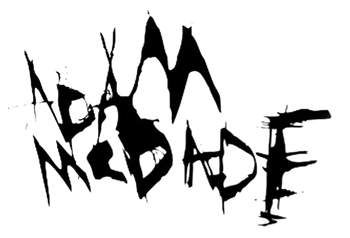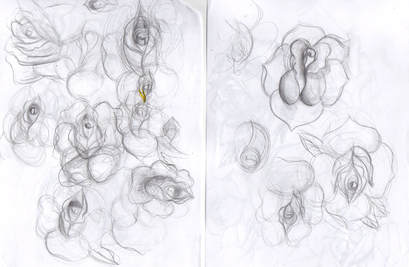Perhaps the most common motif within pictorial tattooing is the skull, as a brief google search of the term ‘traditional tattoo’ will reveal. Skulls have been typical subject matter since the advent of western traditional tattooing, and can be seen in the portfolios of the majority of tattoo artists internationally. There are a multitude of speculations that could offer insight into the reasoning for the commonality of the presence of the skull, ranging from the symbolism it may present in acknowledgment and acceptance of mortality, links to ‘hyper-masculinity’, or an instinctive admiration of natural form. The skull is present in all taxonomies of tattooing from all cultures, (with the exception of pattern-orientated tribal).
Roses are perhaps the second most common tattoo motif in tattoo culture (particularly western tattooing), and are not uncommon to find in combination with a skull. Similarly, speculations for the popularity may be that they could symbolise life and vitality, and an aesthetically pleasing form of nature that adhere to a universally accepted, almost objective idea of beauty. The combination of the rose and the skull may be understood as reference to the fundamental truth that death is a consequence of life, and marking such an acknowledgment on the body may be an attempt to overcome the fear of this reality.
Irrespective of whatever the origins of such motifs popularity, their presence in the tattoo vernacular is apparent to anybody who has entered a tattoo studio. Given the gravitas assigned to such subject matter within the community, my next apprentice task was drawing tasks involving such forms.
I was first asked to draw a rose without any reference, so the artists at the studio would be able to understand the visual reference bank of my mind. They soon recognised that It was somewhat sparse, and opted to give me lesson in drawing ‘traditional tattoo’ roses, which are generally made up of 1 central oval (the bud) with five circles surrounding it (the petals). I initially struggled, but was advised by one of my many mentors, Dan Hartley, to keep my images inside an all-encompassing circle. This was in order to keep the shapes from going too far out of the border of the image, which would be a directly relevant skill for when it comes to tattooing at a designated size on a persons body.
I experimented for some time over a series of my days as an apprentice, until I moved on to rose drawings using reference from photographs, more in keeping with ‘neo-traditional’ or realism. I found that this way of working suited my natural way of processing external visual material into drawings, and the stylization of the rose wasn’t as dramatic and reductive as the traditional approach. Part of the difference between ‘drawing for tattoos’ and regular drawing is that lines needs to be more separated when being applied to tattoos, as over time they spread as the skin ages, which results in a loss of clarity of the design. This exercise was partly to understand those differences and apply them through drawings.
A similar approach was taken with imagery of skulls, however I was able to use reference from the beginning given the precision of anatomy that would be integral to the image looking correct. In order to attempt to create something that served both my interest and fulfil the purpose of the exercise, I opted to draw animal skulls, which although generic, has some slightly more interesting shapes than a human shape to consider. With the skulls, I began sketching in a way that is more in keeping with my illustrative style, as I recognised from completing the rose drawings that I was stronger when drawing in keeping with reference, and then reducing the elements down into more basic shapes that are more in keeping with the traditional tattoo aesthetic.
I continued exploring skulls, which where created by breaking down the reference imagery into shapes (primarily circles) which I then sketched onto the paper I was drawing onto, before picking out the central elements that I could convey. This process was completed with a mechanical pencil that was held towards the end of the instrument, to allow a more loose and free sketch, before bringing the grip closer to the end of the pencil in order to define the sketched area with a greater sense of control, once lines drawn from the sketches seemed appropriate to commit to.
Following from these observational exercises, I also attempted to combine a few of the studies into a singular image (roses, skulls, scrolls), with varying levels of success due to the shapes present and angles which the elements where drawn from. I additionally attempted to simplify the observational drawings by going over the sketches with tracing paper (a process very common in the creation of tattoo stencil creation post-sketch), picking out the integral elements of the image. This exercise was useful in getting out of my traditional methods used to create an illustration, while also practising how to draw with pace and efficiency in a format that would suit (or could be made to suit) multiple tattoo taxonomies.
Though the images shown are merely sketches, they also serve as documentation of cognitive process in interpreting information and trying to force it into adhering into a specific style (with little real success), before creating methods that organically allowed my approach to become more open, and thus acquire a greater diversity of skills. This exercise was just training in broadening my illustrative approach, and discovering methods of working that would suit potential client requests while also utilising my abilities in a way which would allow their natural expansion.
Adam McDade
Illustrator, Tattoo Apprentice, and PhD Research Student





 RSS Feed
RSS Feed
